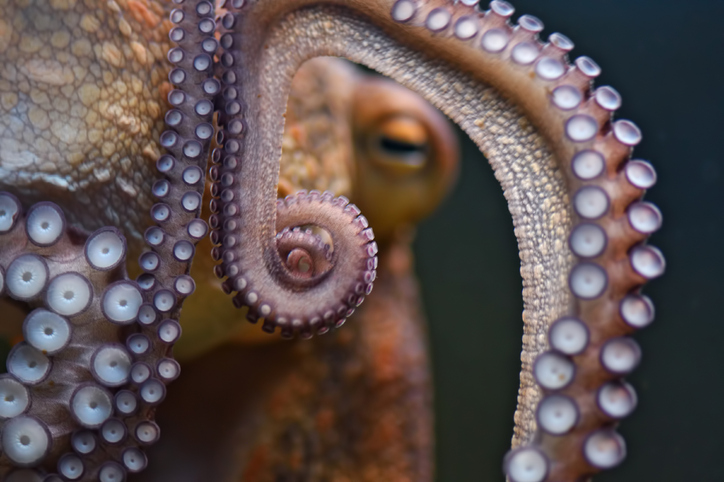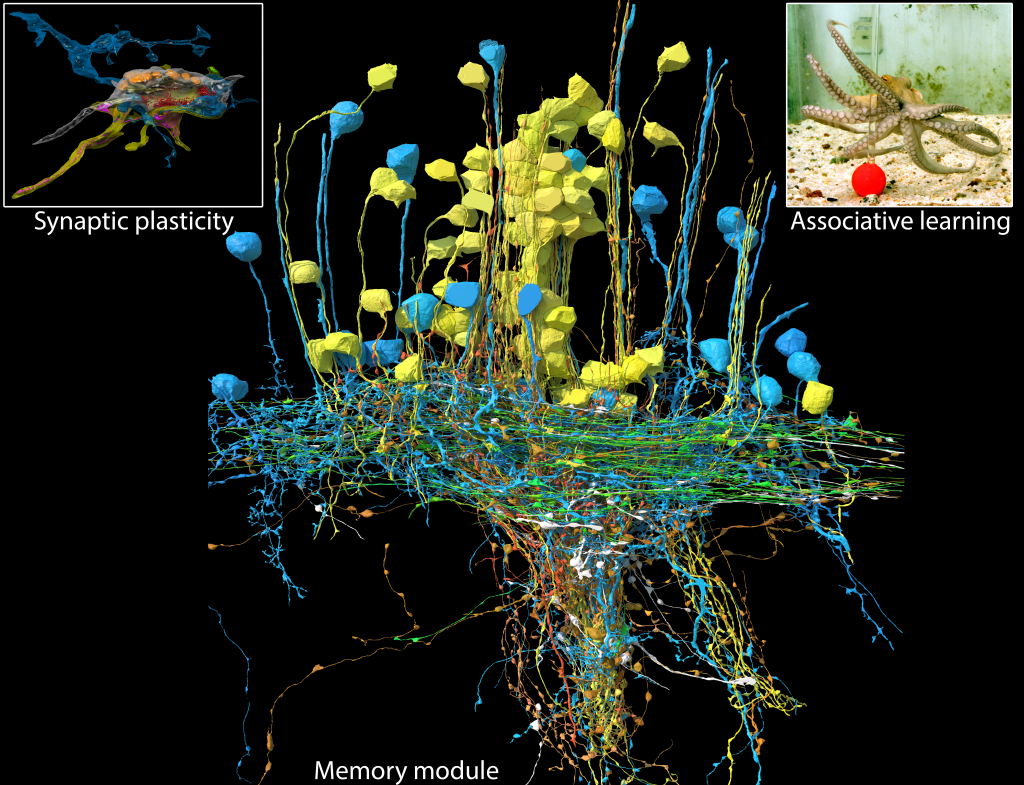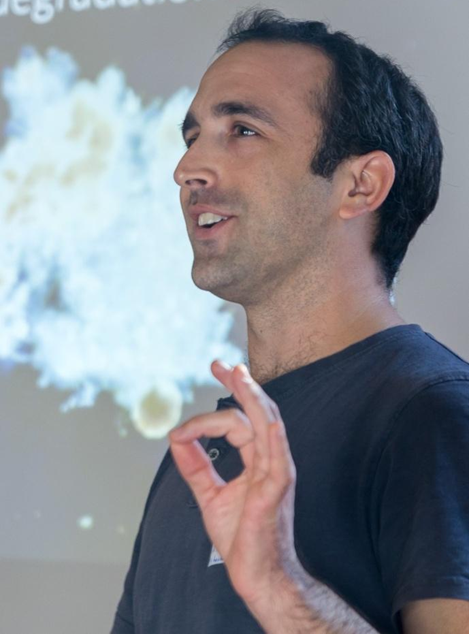
September 20, 2023 — A new study by Prof. (Emeritus) Binyamin “Benny” Hochner of the Alexander Silberman Institute of Life Sciences at the Hebrew University of Jerusalem (HU) and Prof. Jeff Lichtman from Harvard University unveiled the intricate neural architecture governing the enigmatic learning processes of Octopus vulgaris. This research introduces a promising model for delving into memory networks, with implications for both cephalopods’ cognition, considered the most intelligent invertebrates, and broader insights into memory processes, including those in humans.
The octopus, separated from us by seven hundred million years of evolution, showcases cognitive abilities rivaling higher vertebrates. Prof. Hochner’s team at the Hebrew University focused on the octopus’s central nervous system’s vertical lobe (crucial for learning and memory), aiming to compare neural networks and mechanisms across species.
Prof. Hochner remarked, “Our previous studies revealed a fascinating phenomenon of long-term synaptic strengthening (Long-Term Potentiation – LTP) even within the vertical lobe of the octopus. This phenomenon, recognized as a universal synaptic process essential for learning and memory, caught our attention. We meticulously charted the connectivity of the vertical lobe using the precision of an electron microscope, achieving a resolution on the order of about 4 millionths of a millimeter. Together with Prof. Jeff Lichtman’s team at Harvard University, we engineered a robotic system alongside a sophisticated computational algorithm, uniquely capable of organizing hundreds of ultra-thin sections (each only thirty-millionths of a millimeter thick) into a comprehensive 3D structure. This innovative approach enabled us to trace the connectome – namely the intricate synaptic connections among the neural elements composing the network.”

Under the leadership of postdoctoral researchers Dr. Flavie Bidel from HU and Dr. Yaron Meirovitch from Harvard University, a minute tissue volume representing the vertical lobe was meticulously reconstructed to unveil the connectome. Through the application of advanced machine learning algorithms and precise annotation, the researchers charted the wiring of the vertical lobe within octopi brains. This challenged established notions of neural network functionality: unlike typical models, the vertical lobe’s network operates in a feedforward configuration, like a one-way street, with information only from the input neurons to output neurons that control octopi’s behavior.
Divided into two distinct groups: Simple Amacrine Cells (SAMs) and Complex Amacrine Cells (CAMs), the SAMs, numbering around twenty-three million, specialize in learning visual characteristics through synaptic reinforcement. In contrast, the CAMs, totaling approximately 400,000, play a pivotal role in consolidating activity levels. The two types of cells send their axonal branches to connect with bigger cells in the output layer. Simple cells, which transmit “learned” information, make the big cells active, while complex cells make them less active, controlling how the brain works efficiently.
The research reveals Octopus vulgaris as an invaluable model organism for in-depth exploration of memory acquisition networks and opens doors to further unraveling the intricacies of cephalopod cognitive processes, enriching our understanding of memory across various species.
Funding for this research was provided by the Human Frontier Science Program, the Israel Science Foundation, the National Institutes of Health, and Aharon and Ephraim Katzir Study Grants
The study, “Connectomics of the Octopus vulgaris Vertical Lobe Provides Insight into Conserved and Novel Principles of a Memory Acquisition Network,” has been published in eLife.



